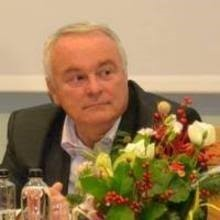Enhancing Sustainable Rural Development through Tourism Strategies
A special issue of Sustainability (ISSN 2071-1050). This special issue belongs to the section "Tourism, Culture, and Heritage".
Deadline for manuscript submissions: closed (15 December 2024) | Viewed by 87871
Special Issue Editors
Interests: tourism; rural tourism; rural wellbeing tourism; spa and wellness tourism; sustainable tourism
Special Issues, Collections and Topics in MDPI journals
Interests: business administration; sustainability; tourism; rural tourism; creative tourism development; management and marketing in tourism
Special Issues, Collections and Topics in MDPI journals
2. Academy of Romanian Scientists, Bucharest, Romania
Interests: consumer behavior; sustainable marketing; retail marketing; international marketing
Special Issues, Collections and Topics in MDPI journals
Special Issue Information
Dear Colleagues,
Rural space remains one of the most authentic destinations in each country. Here, customs are still alive, with tourists able to experience them during longer or shorter holidays. The “return to the nature” trend and the desire of modern tourists to have authentic, traditional, innovative and modern experiences during their holidays encouraged more and more rural destinations to market themselves as offering a unique image and to be considered the best alternative to a traditional and hectic life. Moreover, the COVID-19 pandemic accelerated tourists’ interest from crowded places to quiet destinations and speeded up the demand for rural and/or agritourism services.
The benefits of rural tourism are apparent. On the one hand, it dramatically impacts tourists through the cultural exchange between them and the residents. On the other hand, it represents an important income source for local communities that triggers their social, economic and cultural development. The destination itself is a critical advantage. New tourist destinations emerge and old destinations gain more popularity, thus, increasing development prospects by attracting thematic festivals, events, concerts, etc.
However, the development of rural tourism also unveils considerable responsibility. The interest of tourists in a specific destination can damage the authenticity of a place and transform it in time into a mass tourist attraction. To ensure long-term development with benefits for all stakeholders, tourist activities in rural destinations must be based on sustainable development. All marketing activities must be sustainable, thus, including sustainable practices and adopting a green and responsible approach.
Therefore, the question is how can a rural destination benefit from its tourist potential without damaging its authenticity?
The present Special Issue aims to offer possible answers to this question by including studies and original research beyond this topic. We encourage interested authors to submit original research articles, reviews and critical perspectives to fill in the gaps in knowledge with new developments that are capable of offering stakeholders potential strategies for the sustainable development of rural destinations.
Topics of interest for publication in this Special Issue include but are not limited to the following:
- Innovation and competitiveness in rural tourism;
- The development of rural wellbeing tourism;
- Local values and material and intangible tourist resources;
- The cultural exchange in rural tourism;
- Farm tourism;
- Awareness of the use of local resources and orientation towards research and development;
- Local, regional and national branding;
- Social media and innovation for local tourism;
- Impact of economy sharing platforms on rural tourism;
- Local entrepreneurship in rural tourism and sustainable destinations;
- Sustainable capitalisation of local resources through tourism and through sustainable organisations that act in local communities;
- Marketing local artisanal or gastronomic resources by including local tourist products;
- Tourism marketing in the educational environment: consequences of educating the young generation through teaching and research.
Dr. Alina-Cerasela Aluculesei
Prof. Dr. Puiu Nistoreanu
Prof. Dr. Dan-Cristian Dabija
Guest Editors
Manuscript Submission Information
Manuscripts should be submitted online at www.mdpi.com by registering and logging in to this website. Once you are registered, click here to go to the submission form. Manuscripts can be submitted until the deadline. All submissions that pass pre-check are peer-reviewed. Accepted papers will be published continuously in the journal (as soon as accepted) and will be listed together on the special issue website. Research articles, review articles as well as short communications are invited. For planned papers, a title and short abstract (about 250 words) can be sent to the Editorial Office for assessment.
Submitted manuscripts should not have been published previously, nor be under consideration for publication elsewhere (except conference proceedings papers). All manuscripts are thoroughly refereed through a single-blind peer-review process. A guide for authors and other relevant information for submission of manuscripts is available on the Instructions for Authors page. Sustainability is an international peer-reviewed open access semimonthly journal published by MDPI.
Please visit the Instructions for Authors page before submitting a manuscript. The Article Processing Charge (APC) for publication in this open access journal is 2400 CHF (Swiss Francs). Submitted papers should be well formatted and use good English. Authors may use MDPI's English editing service prior to publication or during author revisions.
Keywords
- rural tourism
- rural development
- sustainability
- sustainable tourism
- sustainable development
- social sustainability
- local economy strategies
- economic sustainability
- ecological sustainability
- economic diversification
- diversification
Benefits of Publishing in a Special Issue
- Ease of navigation: Grouping papers by topic helps scholars navigate broad scope journals more efficiently.
- Greater discoverability: Special Issues support the reach and impact of scientific research. Articles in Special Issues are more discoverable and cited more frequently.
- Expansion of research network: Special Issues facilitate connections among authors, fostering scientific collaborations.
- External promotion: Articles in Special Issues are often promoted through the journal's social media, increasing their visibility.
- Reprint: MDPI Books provides the opportunity to republish successful Special Issues in book format, both online and in print.
Further information on MDPI's Special Issue policies can be found here.







